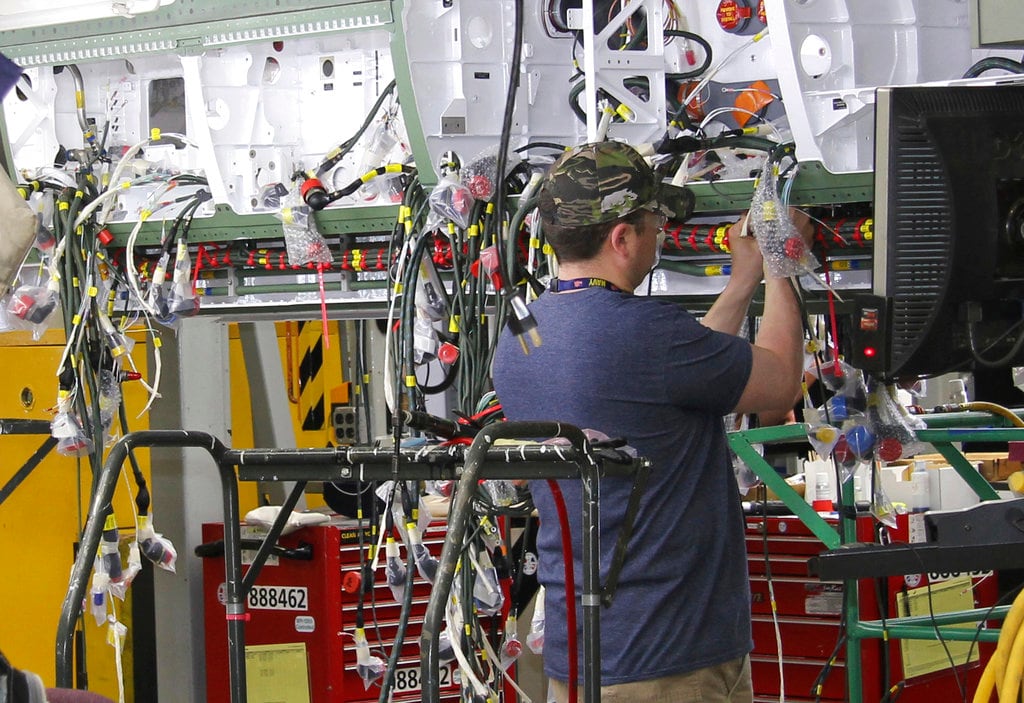FARNBOROUGH, England — The Netherlands on Tuesday inked a deal to purchase four MQ-9 Reaper Block 5 drones from General Atomics, marking the first sale of unmanned aerial systems since U.S. President Donald Trump signed off on a policy to loosen up arms sale restrictions.
During a ceremony at the Farnborough Airshow, Vice Adm. Jan de Waard, the director of the Netherlands' Defence Materiel Organisation, and Lt. Gen. Charles Hooper, head of the U.S. Defense Security Cooperation Agency, signed a letter of offer and acceptance. Such a letter cements a foreign military sale between the United States and a foreign nation.
The sale of MQ-9s to the Netherlands has been in the works for a long time.
“It’s a party time today,” de Waard said. “We started this program in 2003. We postponed it in 2005, then we revitalized it in, I think, in 2010, and then we postponed it again.”
The U.S. State Department first approved the Netherlands for a potential MQ-9 sale in 2015, when it valued the order at about $339 million for four air vehicles, six Honeywell TPE331-10T turboprop engines, ground stations, Lynx radars, and a variety of other subsystems and spares. The deal is for the unarmed configuration of the Reaper.
Hooper said the Dutch MQ-9s would “not only accentuate their own domestic national security capabilities but will add to their capability to contribute to NATO as a part of that alliance and coalition.”
The announcement of the deal with the Dutch comes just a day after Trump approved an implementation plan for his new export reform policy, called the Conventional Arms Transfer policy. U.S. government agencies been awaiting guidance about how to interpret new arms transfer rules.
RELATED

The Royal Netherlands Air Force will join Spain and the U.S. in operating the Block 5 variant of the MQ-9, the former of which will begin receiving its aircraft in 2019.
France and Italy additionally operate Block 1 systems, as does the U.K., although the British Royal Air Force is acquiring the new certifiable MQ-9B version via its Protector program, which is expected to enter service in the early 2020s.
India is additionally looking to acquire 22 of the Sea Guardian variant from the U.S., and General Atomics Aeronautical Systems, Inc. sources claimed that a letter of offer and acceptance for this is expected to be signed by the end of 2018.
There is an option to retrofit the Block 5 to carry the wings and tail of the SkyGuardian, although no detail has been provided on whether or not any of the other nations are currently planning on selecting the option.
Dave Alexander, president of GA-ASI, told Defense News that while there is no immediate demand for either the SkyGuardian or the retrofit option from the largest Reaper operator, the U.S. Air Force special operations forces have shown an interest in it due to an ability to operate from a shorter runway in support of expeditionary operations.
The company has orders to fulfill production of the Block 5 MQ-9 for another five years, he added, noting that GA-ASI is planning to expand its production capabilities to enable it to fulfill forecast orders from India and three other customers.
Aside from the deal with the Royal Netherlands Air Force, a number of agreements were signed between GA-ASI and partners throughout the Farnborough Airshow, an apparent move by the company to demonstrate its willingness to transfer work and technology to customer nations.
Leonardo UK announced it signed an agreement with GA-ASI for the companies to jointly offer the former’s Sage electronic support measure system for both the SkyGuardian and Sea Guardian variants.
It will be integrated without the need for an external pod and will be available to order from 2019.
Furthermore, General Atomics and GKN Aerospace signed a letter of intent July 17 to facilitate the development of composite tails for the MQ-9 in the U.K., while Dutch company Fokker has developed landing gear subsystems for the UAV since 2016.
Valerie Insinna is Defense News' air warfare reporter. She previously worked the Navy/congressional beats for Defense Daily, which followed almost three years as a staff writer for National Defense Magazine. Prior to that, she worked as an editorial assistant for the Tokyo Shimbun’s Washington bureau.








